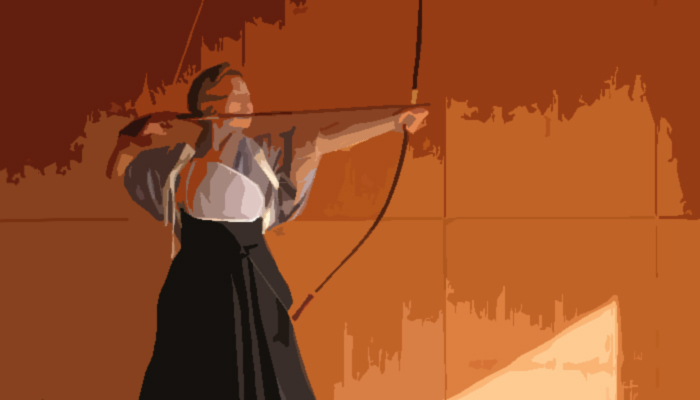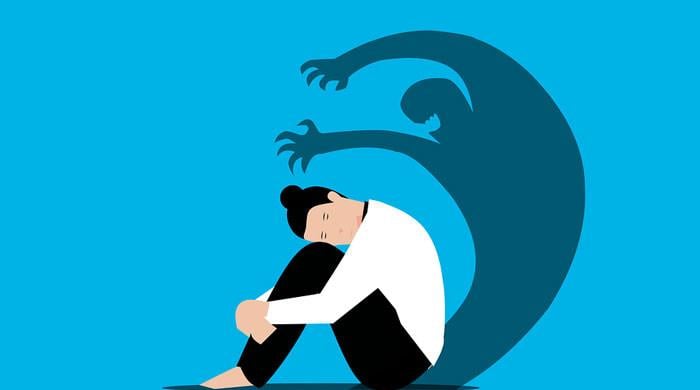Spirit of budo and peace awakens in Karachi
A glance towards the centuries-old bows and arrows, gun powder bags, and finely-crafted bamboos have a mesmerising effect
February 14, 2019

KARACHI: The spirit of Japanese budo has descended to Pakistan's port city and economic hub, Karachi.
The souls of the samurai, the practitioners of this art, have travelled all the way from their island nation to tell the captivating stories of their bravery, high moral and physical values, and intellect. In essence, their stories of dramatic victory are the ones that mesmerise the whole world.
And now, it is time for Karachiites to have the taste.
In the exhibition hall, none of the fighters is physically present. Yet, having a look at their impressive attires and weapons was enough to learn about the tales of justice, benevolence, veracity, politeness, honour, and loyalty.
A profound calmness welcomes as one enters the hall. All the warriors appear to be in deep meditation, demanding the visitor to respect their tranquil state. A glance towards their centuries-old bows and arrows, gun powder bags, and finely-crafted bamboos have a mesmerising effect.
Seeing the priceless, single-edged curved swords is enough to glue visitors to the glass boxes they are kept in. Here, the art of craftsmanship is at its full display; hardly anyone knows who designed most of these delicate items centuries ago, yet one cannot help admire the hands that made them.
The slender, razor-sharp iconic sword of the samurai have a fatal attraction. They were only drawn to defend the tribal honour. The delicate fittings and ornament of their handles shine a light on the elegance of those who proudly carried them.
The helmets of these martial artists have a magnetic power. Some are adorned with horns and hair to deceive the enemy into attacking a soft target, while the others are made of catfish-tail, with a dragonfly-shaped symbol on the front side so as to demonstrate a forward march towards victory.
It is like a visit to the wonderland where one finds themselves surrounded by strange warriors who, long past their glory days, pose no threat now. Instead, they speak volumes about the fights imposed on them by society.
Surviving was the way of the budo. This art comprises judo, kendo, aikido, and archery. Each time, they skillfully escaped certain death only to face another grave challenge.
In ancient Japan, swords were drawn in a fraction of a second when a warrior faced an opponent. However, those who practised budo were the ones who knew the art of survival. To them, "survival was everything, all else was trivial."
At the same time, injuring the opponent meant harming themselves and, so, they always attacked the enemy's strategy, trying their best not to hit the body of the attacker.
The art is still practised in Japan. From a very young age, budo enthusiasts undergo vigorous physical exercises to strengthen their bodies and learn meditation to achieve inner calm.
After years of practice and observing a strict diet regime, they master self-perfection in terms of the martial arts, with their most lethal weapon being the power of their owns minds.
If a fight was unavoidable, these warriors would refuse to consider even the bloodthirstiest of opponents their enemy. They give them tremendous respect for offering their bodies to master a warrior's skills.
That is the reason budo inculcates high-value qualities.
To those who learn this art, even death seems to be a fascinating act. They are willing to lay down their lives and consider it to be great pride. In a nutshell, it’s the art of living from bow to bow.
Despite all odds, budo has survived a major crisis.
The end of feudalism and the beginning of modernisation posed a grave threat to the art. Another blow came after the Second World War when the educational system was overhauled.
The Japanese society's deep-rooted respect for these iconic warriors, nevertheless, helped revive it every time.
In the modern world, when countries use the Iron Dome and missile defence shields for protection, there appears little importance of samurais.
While they certainly cannot defend themselves against modern military machines, one may even argue the role of such warriors in poorly defending Japan during the World War.
So why is such an exhibition showcased around the world with pride and glory? And why, domestically, the Japanese are encouraged to revere budo even in the 21st century?
One must not expect budo practitioners to be superhuman. Nonetheless, they still have their own way of living. They spend their lives mastering the art and are known to be defenders, not attackers.
Budo practitioners are the ones who cultivate their mind and reflect upon the nature of the self. They try to find peace until their last breath. Any wrong step could potentially mean the end end of their journey.
But for good or bad, this is so deeply rooted in the Japanese society that it may take decades to the legacy to fade.









